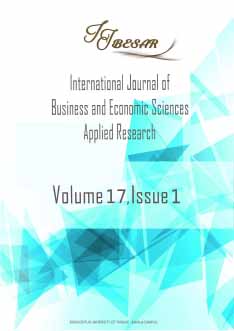Tax Progressivity and R&D Employment
Tax Progressivity and R&D Employment
Author(s): Diego d'AndriaSubject(s): Economy, Business Economy / Management, Accounting - Business Administration
Published by: Τεχνολογικό Εκπαιδευτικό Ίδρυμα Ανατολικής Μακεδονίας και Θράκης
Keywords: Tax progressivity;R&D;Labour force structure;
Summary/Abstract: We study the relationship between tax progressivity and the size of the R&D workforce, using a panel of European countries in 2000-2019. Design/methodology/approach: We review the theoretical literature which provides opposing predictions about such a relationship. Next, we develop a set of econometric models to test for different predictions offered by the reviewed theory. Findings: We demonstrate that the relationship between tax progressivity and the size of the R&D workforce exists as a "within" effect, it is negative, meaning that a larger tax progressivity is associated with smaller shares of employment in R&D activities, and it remains statistically significant after performing several robustness tests. Differently to previous studies based on patenting inventors, we find no effect due to top tax rates on the size of R&D employment. Our results support the view that the market for R&D works is best described using models based on information asymmetry. Research limitations/implications: Our results bring important policy implications: it is not the level but rather the shape of the tax schedule which may cause tax-induced social cost by reducing the available R&D workforce. Originality/value: This is the first study explicitly focusing on the effects of tax progressivity on the job market for R&D workers, thus enriching previous literature on the taxation of scientists and technical workers.
Journal: International Journal of Business and Economic Sciences Applied Research (IJBESAR)
- Issue Year: 17/2024
- Issue No: 1
- Page Range: 07-26
- Page Count: 20
- Language: English

